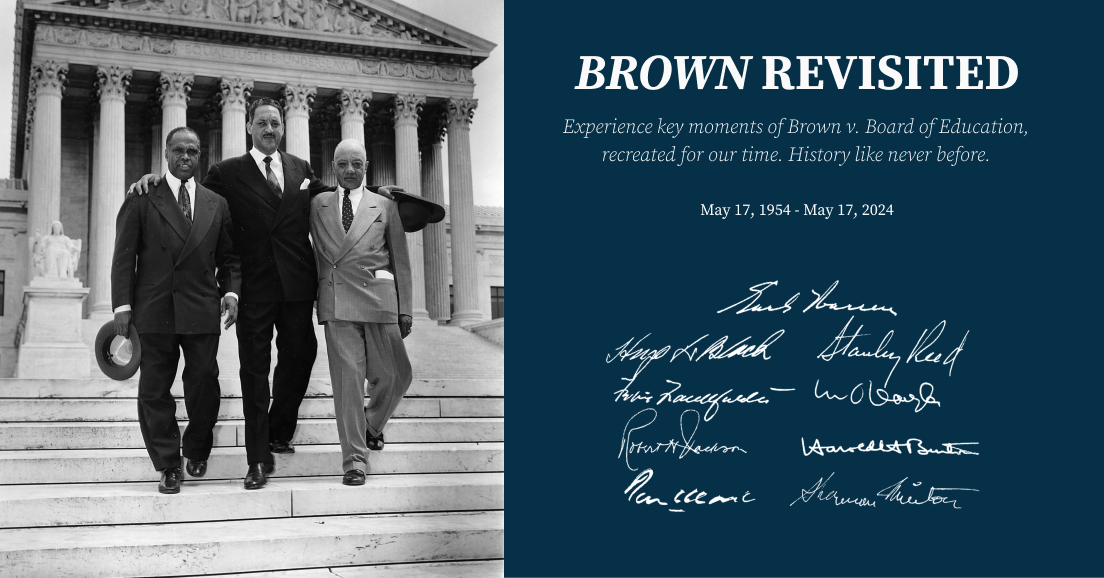On May 17, 1954, the U.S. Supreme Court’s Brown v. Board of Education ruling outlawed segregation in public schools. The decision was a tremendous step forward for civil rights in the United States. However, there is no audio recording of this landmark moment. Until now, Brown v. Board of Education has been confined to the page.
Jerry Goldman, Northwestern professor emeritus and founder of Oyez, approached Spooler with a remarkable idea: recreate the iconic case using modern synthetic voice technology. So with our partners—Goldman, Northwestern University’s Knight Lab, Ukraine-based AI engineering company Respeecher, Italian design firm Idib, and a crew of talented journalists and voice actors—Spooler has brought Brown v. Board of Education to life.
The project launches today. Check it out at brown.oyez.org.

Spooler’s creative team, led by Andy Bowers and Kerry Donahue, pored over the 1952 and 1953 oral arguments to create a script contextualizing key moments. Then we tapped Respeecher to create synthetic voice models of key figures, including Thurgood Marshall and Chief Justice Earl Warren, based on period media samples.
A talented group of voice actors—Dion Graham, Steven Kearney, and Henry Leyva—brought key moments of the transcripts to life through terrific performances. Their recordings were then run through the project’s voice models to create stunningly realistic recreations of the main Brown participants.
Award-winning journalist Karen Grigsby Bates is the project’s narrator. Idib’s site design was meticulously brought to life by Spooler’s CK Hicks with two goals: accuracy and transparency. In a world of deepfakes, Spooler is committed to using synthetic voice cloning and AI speech for good.
Really, though, the best way to experience it is to hear it, so we made a video describing the process.
To learn more about the project and all of the teams who brought it to fruition, check out the project’s about page.